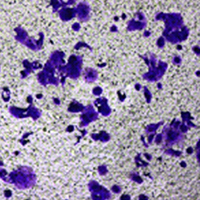LncRNA FGD5-AS1 functions as an oncogene to upregulate GTPBP4 expression by sponging miR-873-5p in hepatocellular carcinoma

All claims expressed in this article are solely those of the authors and do not necessarily represent those of their affiliated organizations, or those of the publisher, the editors and the reviewers. Any product that may be evaluated in this article or claim that may be made by its manufacturer is not guaranteed or endorsed by the publisher.
Accepted: 11 October 2021
Authors
The long non-coding FGD5-AS1 (LncFGD5-AS1) has been reported to be a novel carcinogenic gene and participant in regulating tumor progression by sponging microRNAs (miRNAs). However, the pattern of expression and the biological role of FGD5-AS1 in hepatocellular carcinoma (HCC) remains largely unknown. The expression level of FGD5-AS1 in tumor tissues and cell lines was measured by RT-qPCR. CCK-8, EdU, flow cytometry, wound healing, and transwell chamber assays were performed to investigate the role of FGD5-AS1 in cell proliferation, apoptosis, migration, and invasion in HCC. Dual luciferase reporter, and RNA pull-down assays were performed to identify the regulatory interactions among FGD5-AS1, miR-873-5p and GTP-binding protein 4 (GTPBP4). We found that the expression of FGD5-AS1 was upregulated in HCC tissues and cell lines. Moreover, the knockdown of FGD5-AS1 suppressed cell proliferation, migration and invasion, and induced apoptosis in HCC cells. Further studies demonstrated that FGD5-AS1 could function as a competitive RNA by sponging miR-873-5p in HCC cells. Moreover, GTPBP4 was identified as direct downstream target of miR-873-5p in HCC cells and FGD5-AS1mediated the effects of GTPBP4 by competitively binding with miR-873-5p. Taken together, this study demonstrated the regulatory role of FGD5-AS1 in the progression of HCC and identified the miR-873-5p/GTPBP4 axis as the direct downstream pathway. It represents a promising novel therapeutic strategy for HCC patients.
Supporting Agencies
the National Natural Science Foundation of ChinaHow to Cite

This work is licensed under a Creative Commons Attribution-NonCommercial 4.0 International License.









